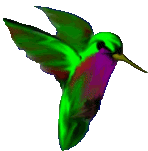Week 4
Note re: Quiz
I looked at the quiz for this week and I am honestly stumped on most of the questions. I have been going back to all the videos and previous weeks to cover the material again. Since I feel I would have to look to outer sources for every question I'm not sure if it would be cheating for me to hand it in this week??? But I want to try to fill it out just to find the answers even if I cannot answer them on my own. I scheduled office hours for next Monday, and will be going to the Friday help sessions as often as I am able to, and consulting/working with some classmates and residents as well. It does feel like information is starting to seep in, or the general concepts, but I am not able to write code from scratch yet or troubleshoot on my own. It helped a lot to follow the Arduino project book. Not giving up yet!!! I want to learn how to build a basic interactive system with light/sound and it seems that understanding these principles will be necessary for that.






